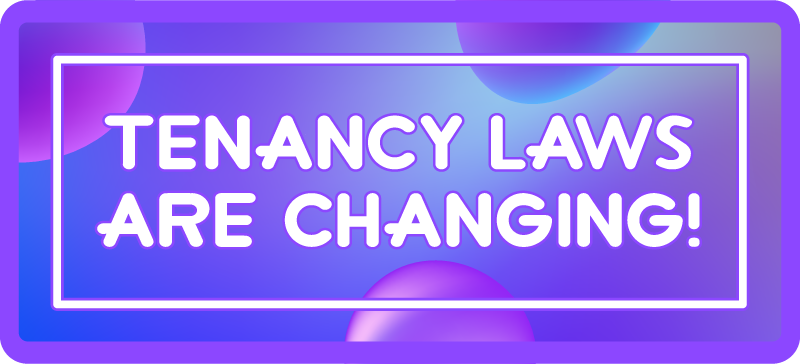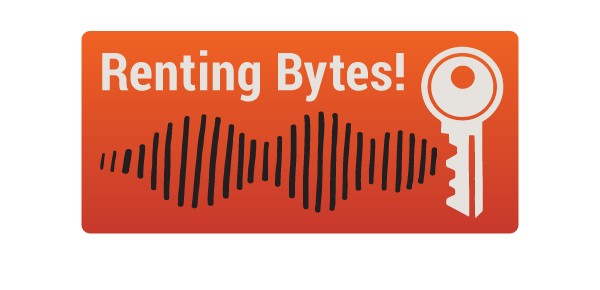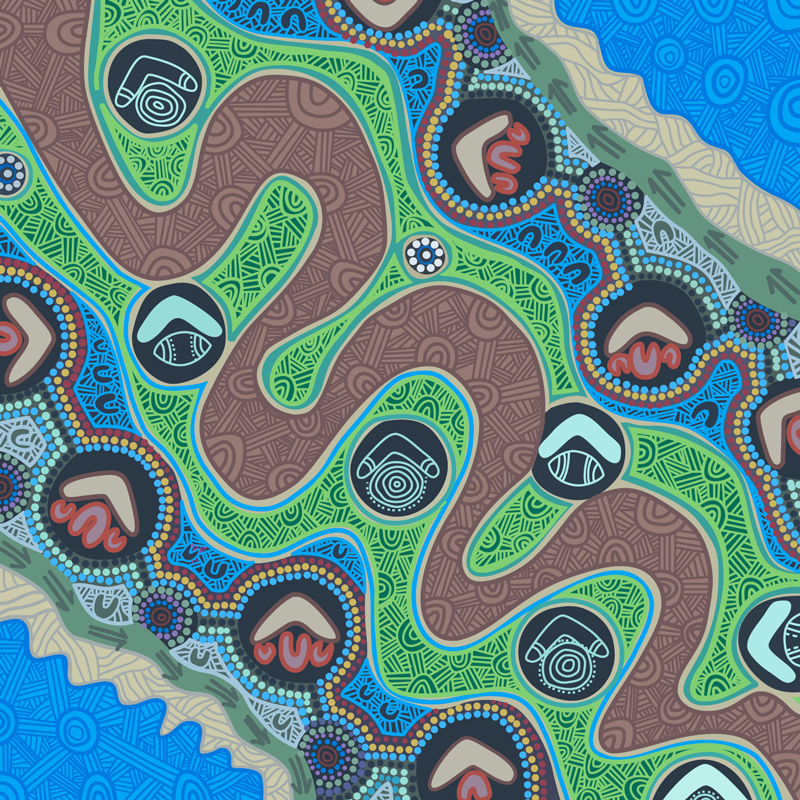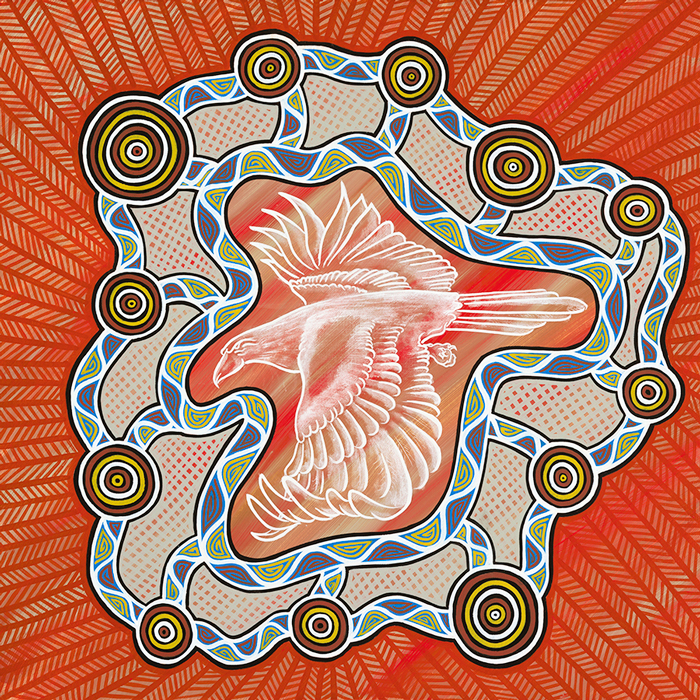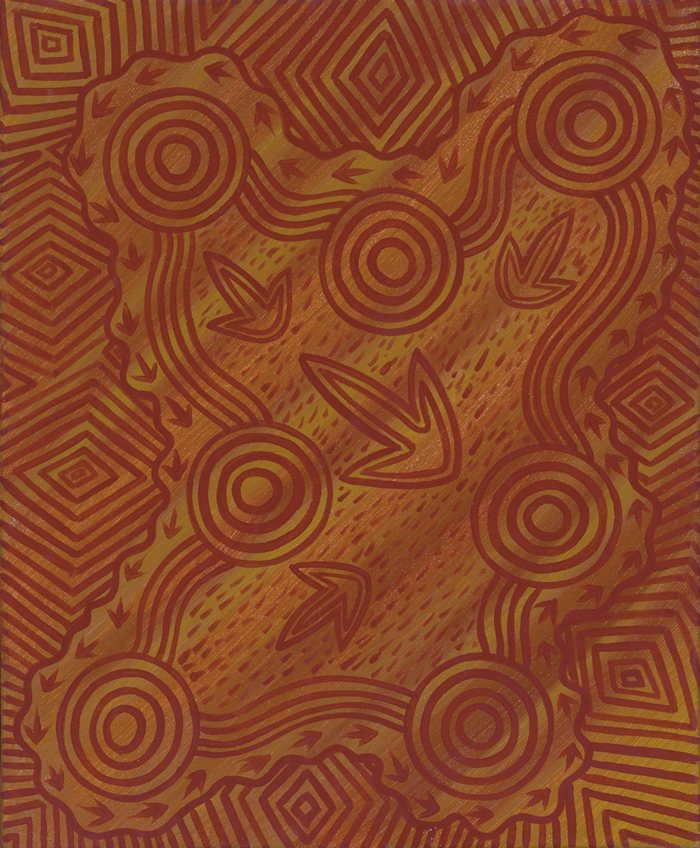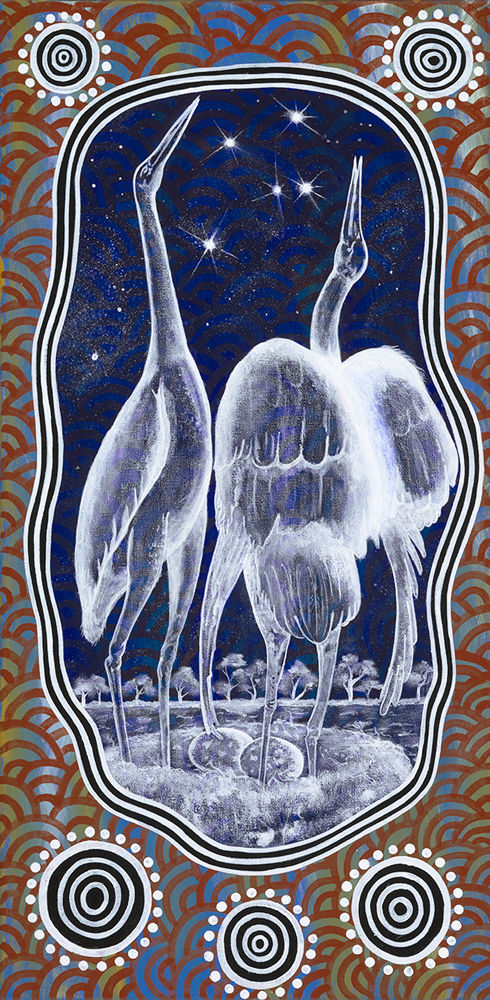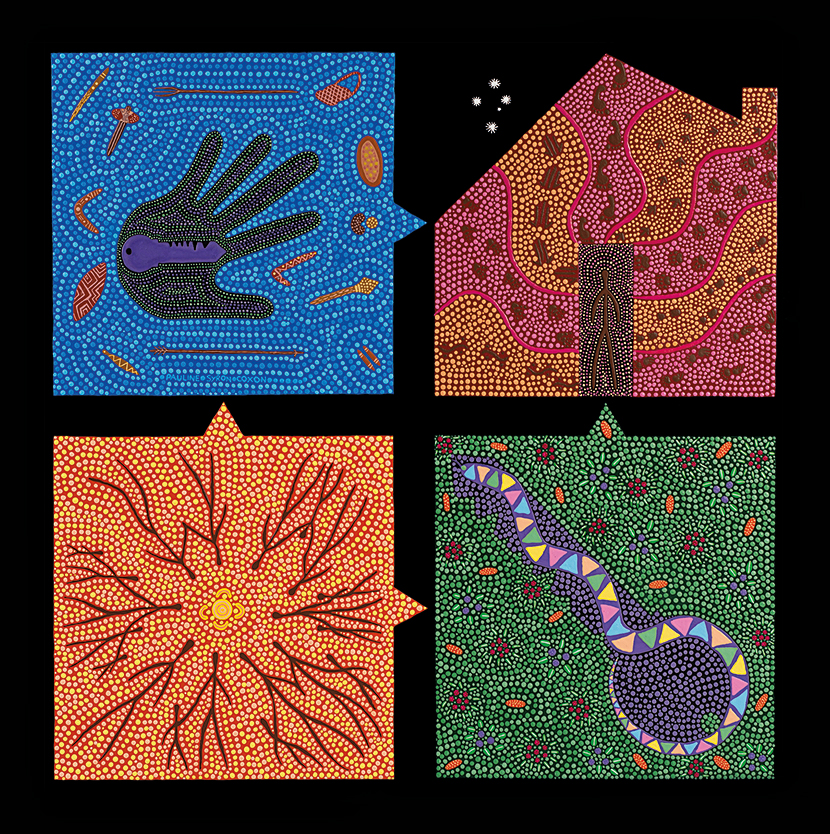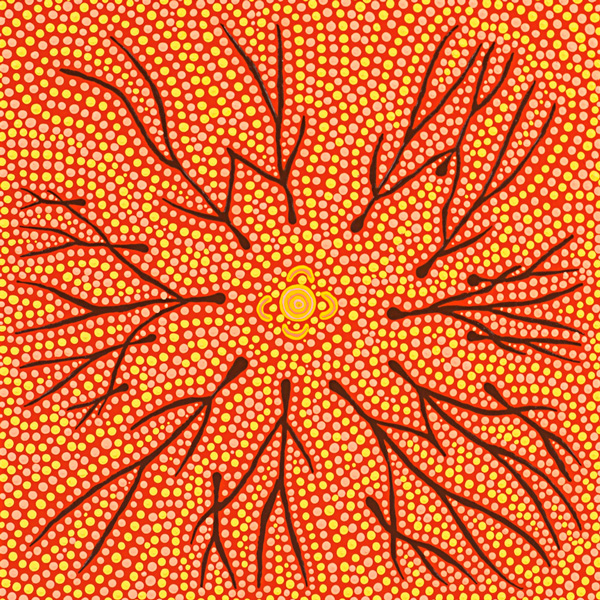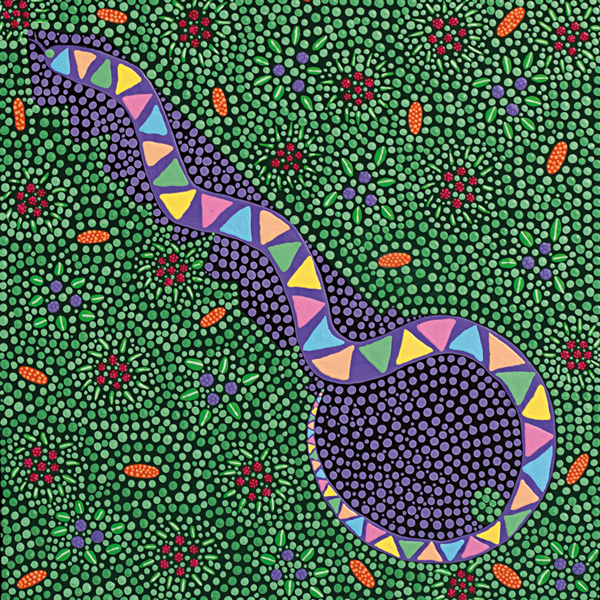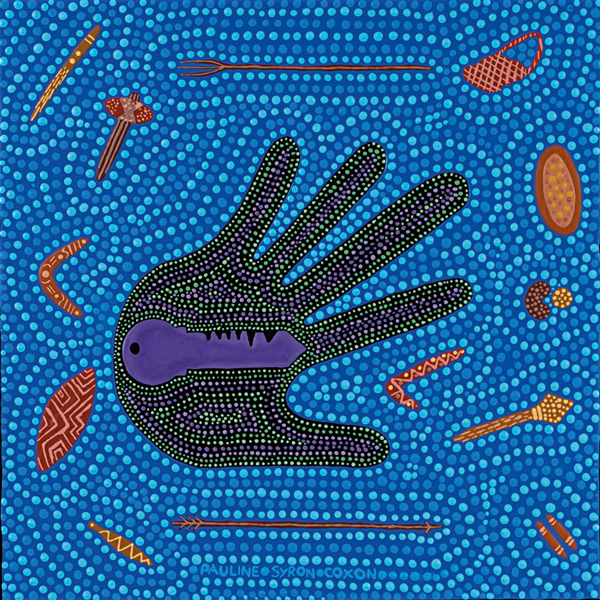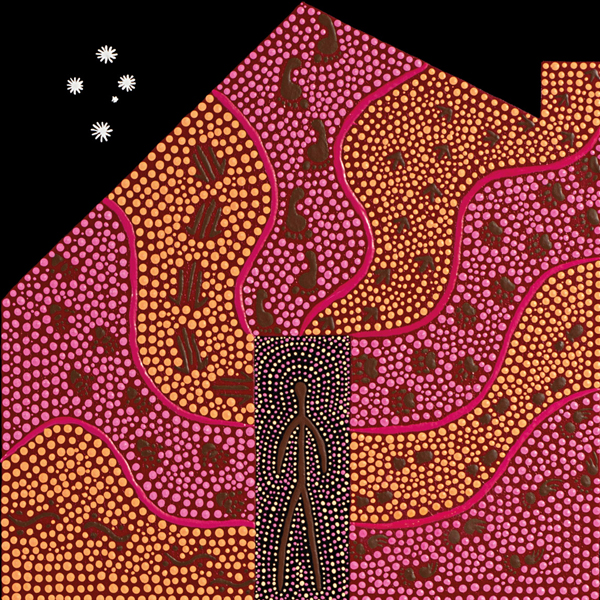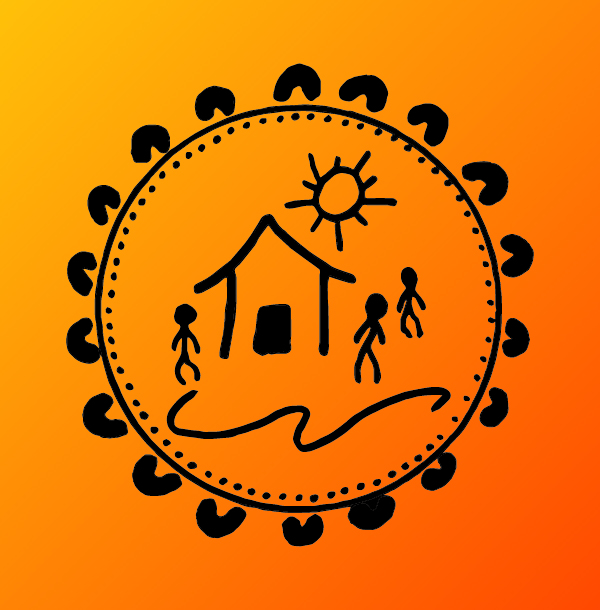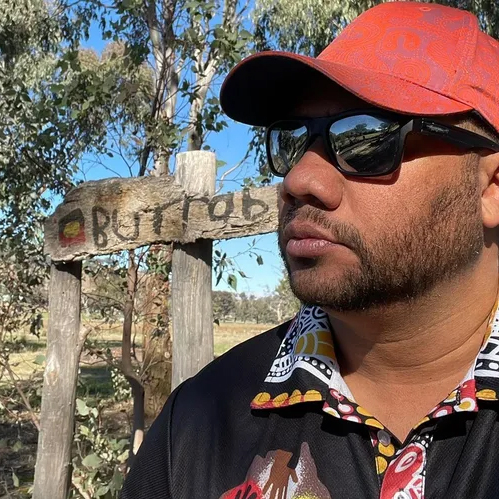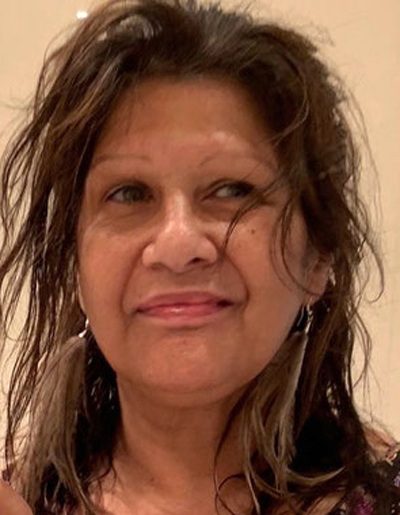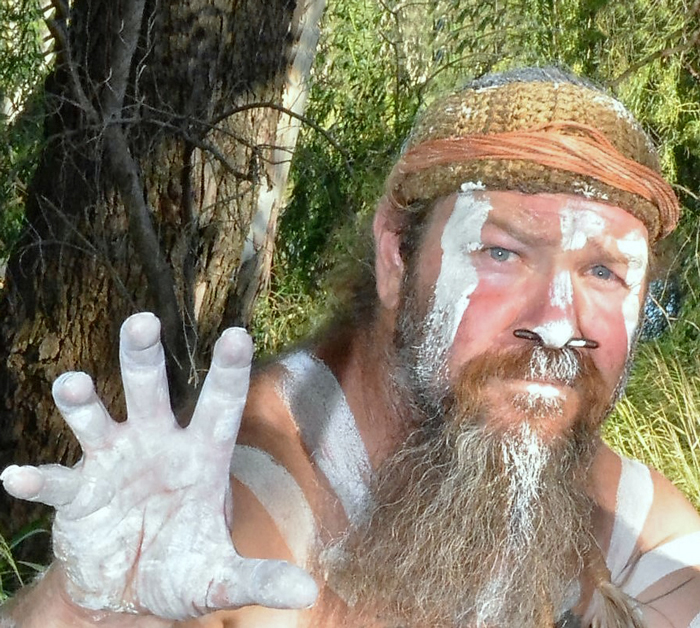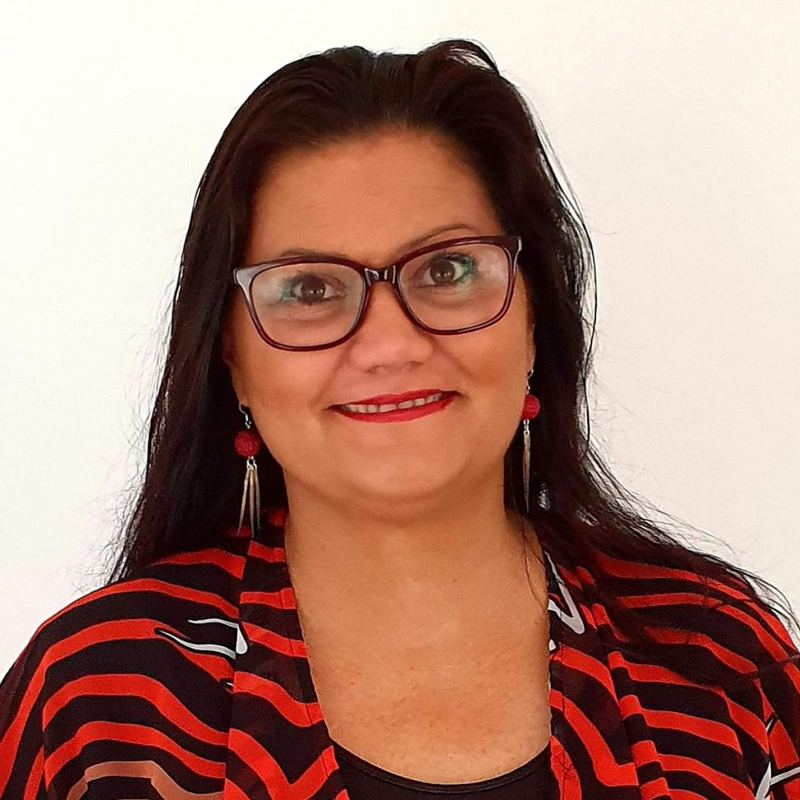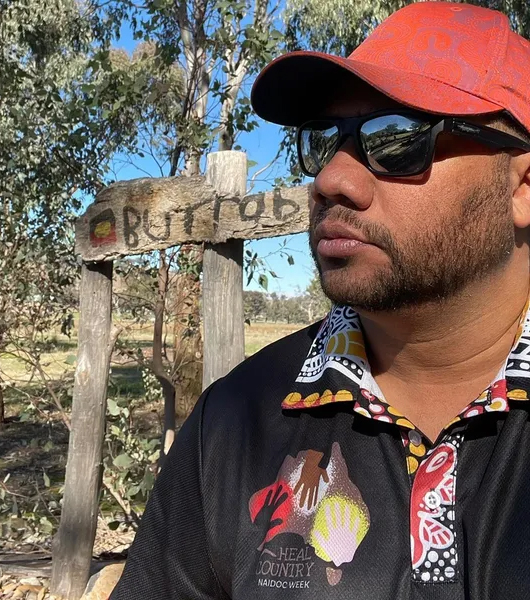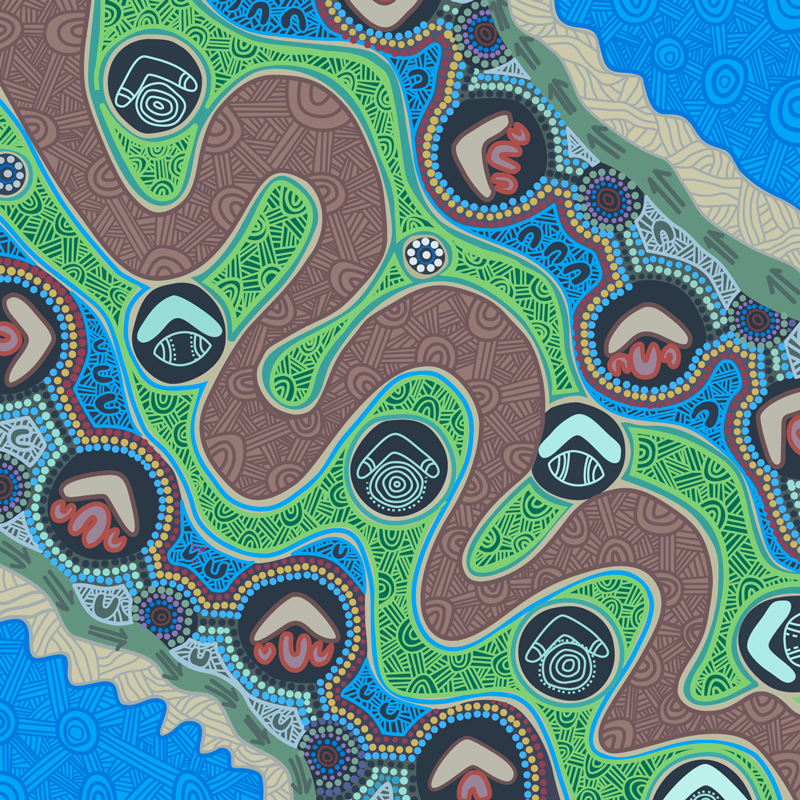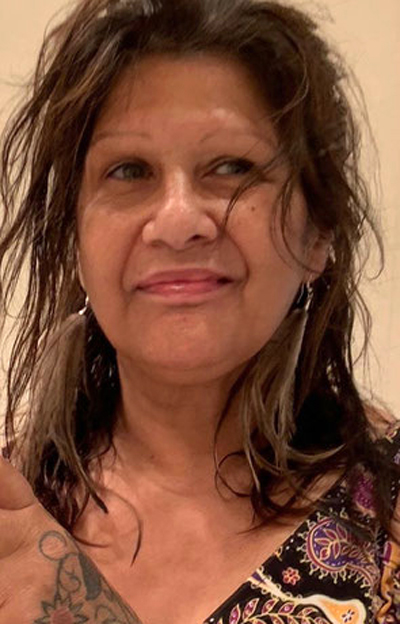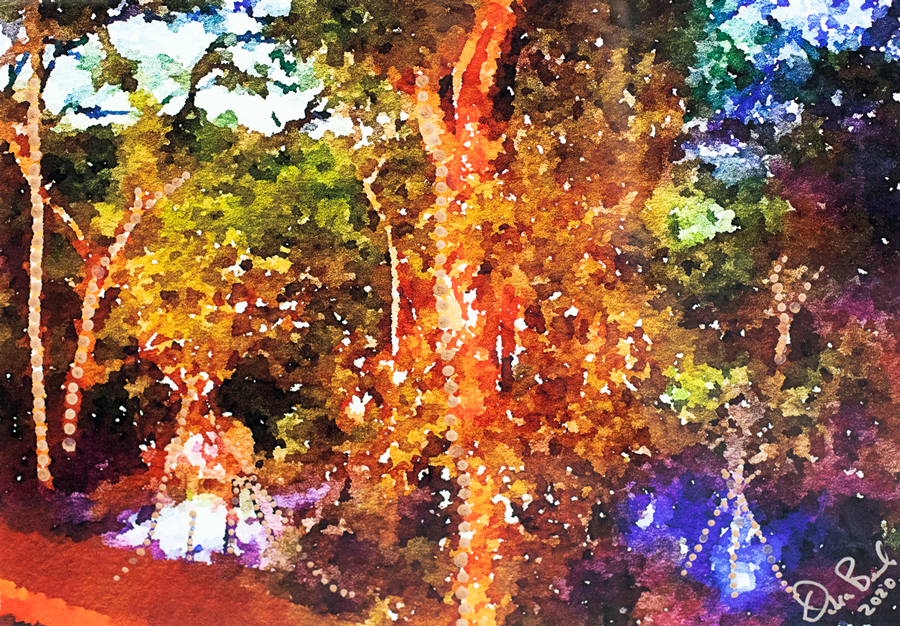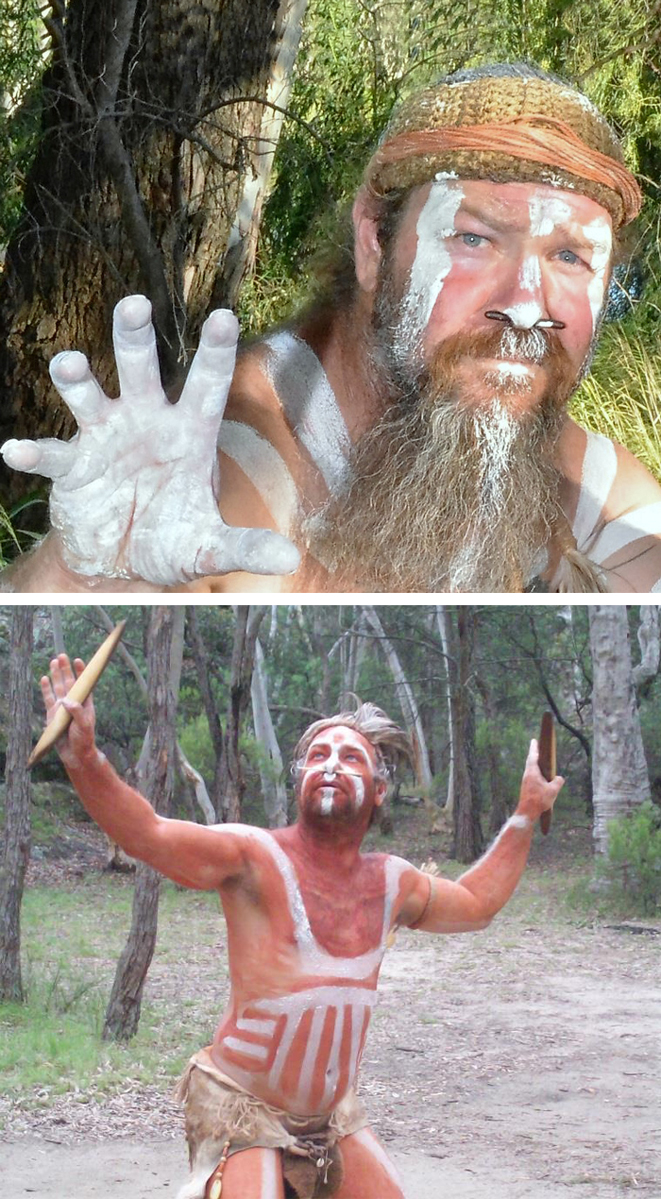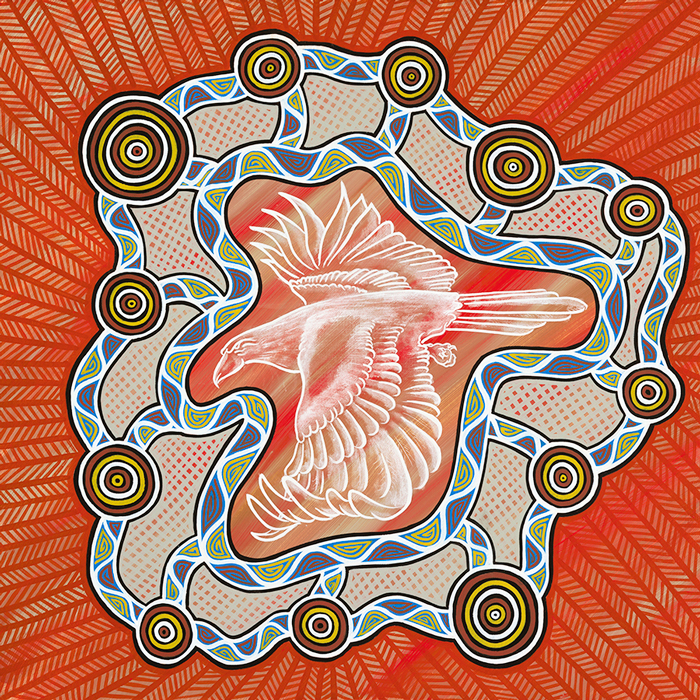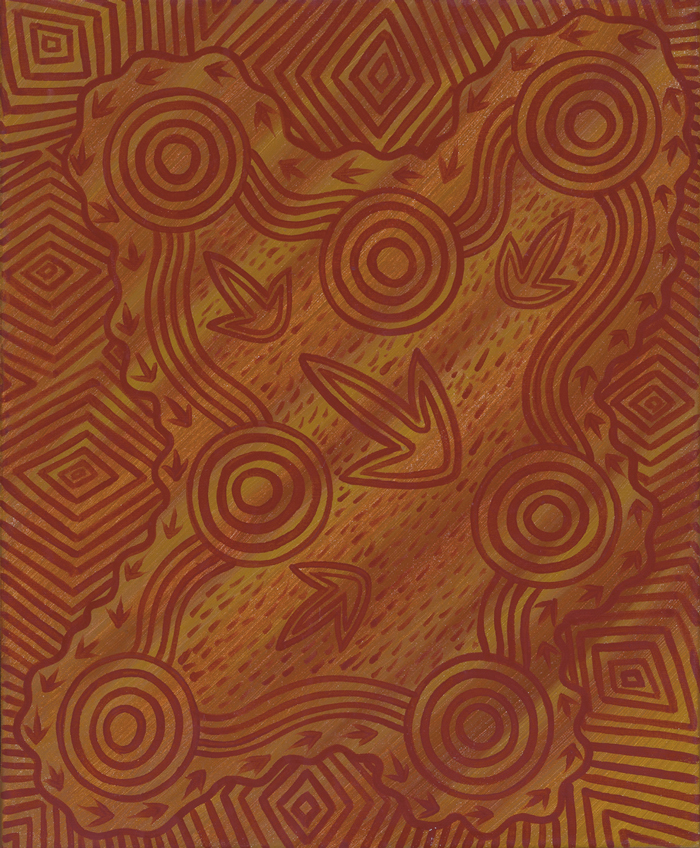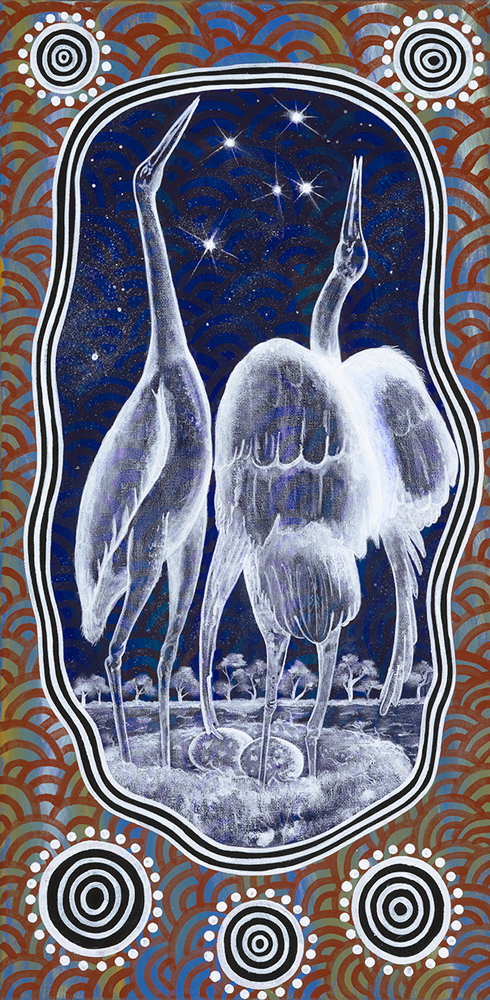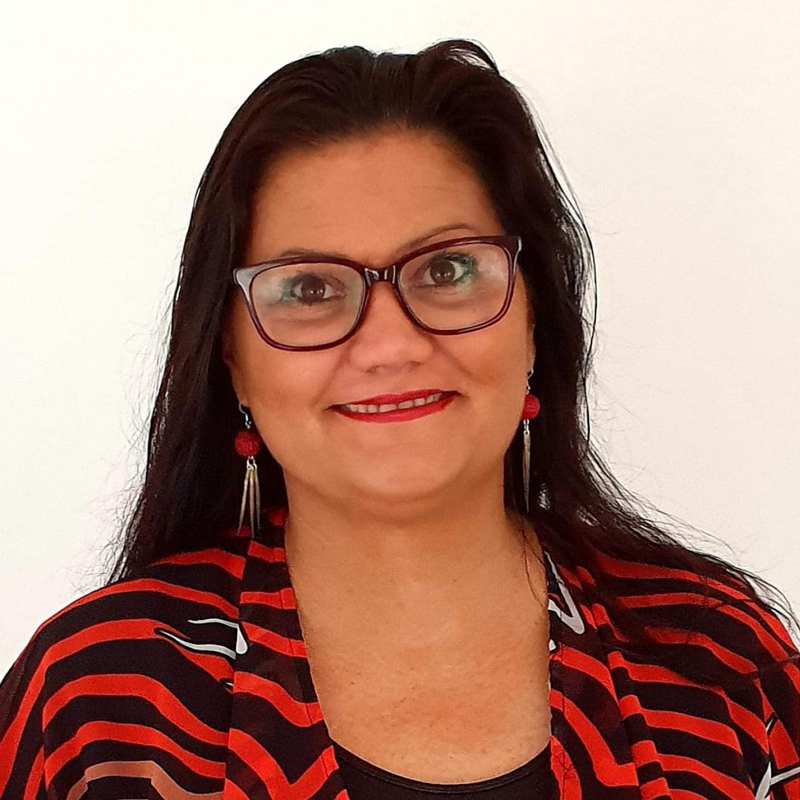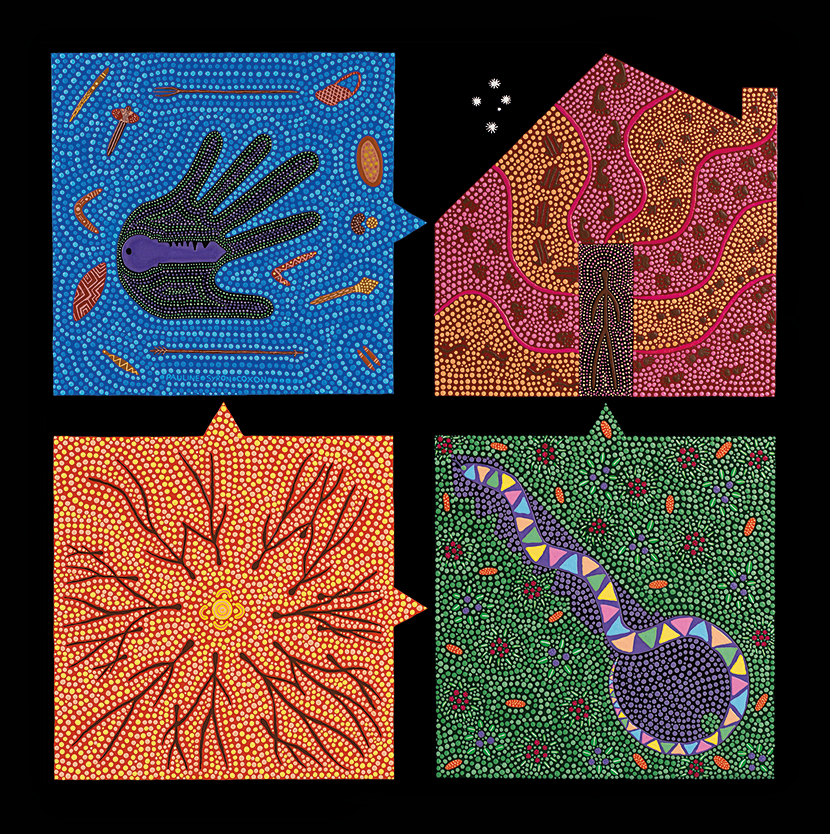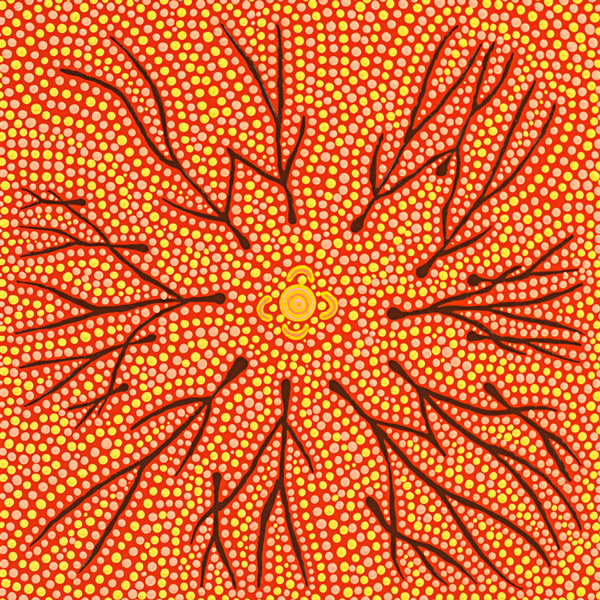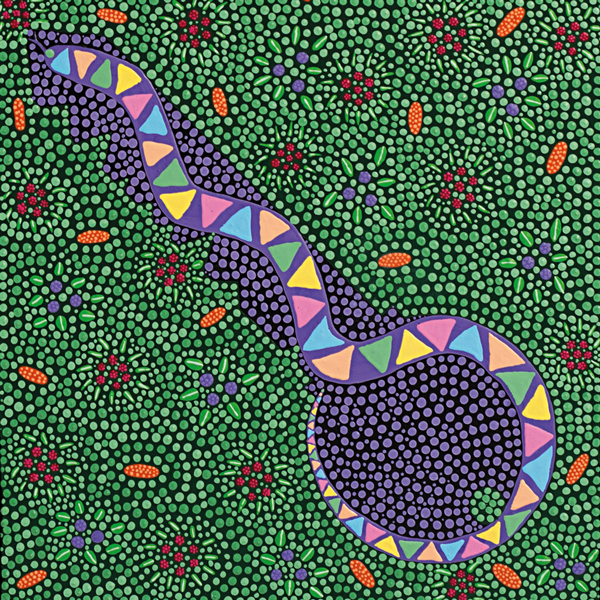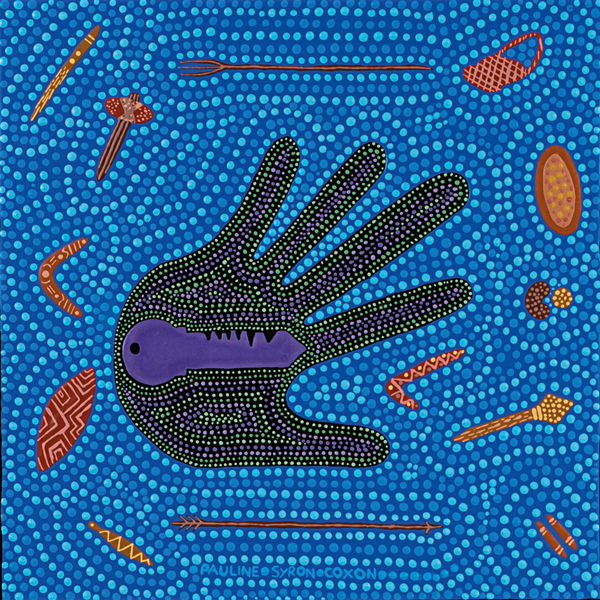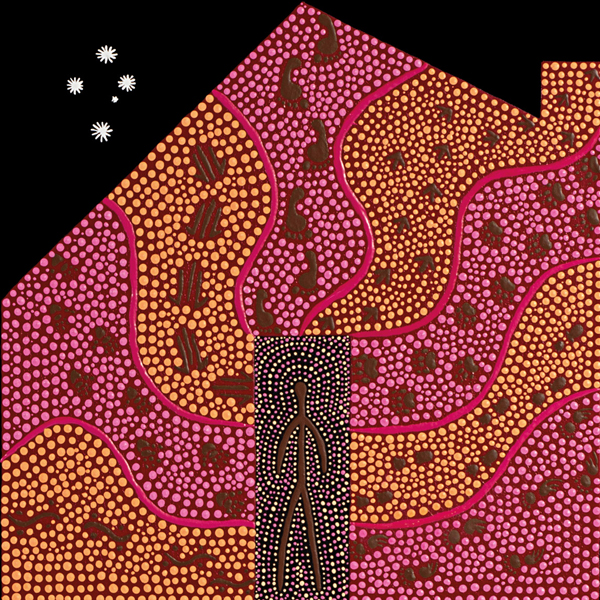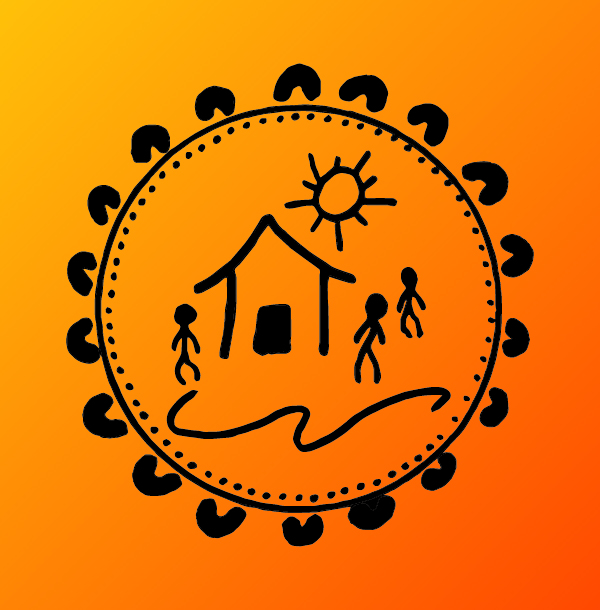Aboriginal artworks
Aboriginal artworks
Over the years, the Tenants' Union has proudly commissioned a series of tenancy-inspired artworks by Aboriginal artists Luke Penrith, Debra Beale, Millmullian, Pauline Syron-Coxon, and Deanna Schreiber. We are delighted with all the works and sincerely thank the artists. Tap on each to see the full image. Scroll down for detail and artist statements.
Luke Penrith
Luke is a contemporary Aboriginal artist whose ancestry is connected through the Wiradjuri, Wotjobaluk, the Yuin and the Gumbaynggirr Nations. Luke is driven by supporting and nurturing First Nations Businesses and job-seekers. Lore, culture and heritage are paramount to Luke and this is reflected in his art and design. He is passionate about giving back to Community and collaborating on projects that see funds go back to grassroots programs. The Wiradjuri Gugar is Luke’s family’s spiritual emblem. Totems define peoples’ roles and responsibilities. Luke uses many different mediums, such as clay, acrylics, and pastels. Each idea manifests in its own individual style. lukepenrithartsanddesigns.com
Debra Beale
My name is Debra Beale and I am a Sydney-based Artist and Designer Maker. I come from the Palawa/Boonwurrung/Yorta Yorta/Wiradjuri and Gamilaraay/Wonnarua Nation. I was born in Surry Hills, Sydney and have been practising art for over 25 years.
My studio is located in Warrimoo, formally known as ‘Karabah’ (Where Eagles Land), Australian Blue Mountains, Darug Nation. It is my home and a place I can connect to my inner deep self.
I am passionate about bringing my Aboriginal art and culture to life using contemporary media and traditional themes through mediums such as Australian bush Jewellery, paintings, sculpture, sculpture installations, photography, ceramics and textiles.
My connection to land, sea and sky is a spiritual connection. It is also a healing journey allowing me to express my lived experience through experimenting with sustainable and natural materials from our ‘ngayi parri’ (mother earth), Wonnarua language. boomalli.com.au/artist/debra-beale
Aboriginal Bush Lamp – Healing Gunya
By Debra Beale (Gamilaraay/Wonnarua – Palawa/Boonwurrung/Yorta Yorta/Wiradjuri). Medium: Bark, Raffia, Gum Leaves. 2020.
In our Aboriginal way we have always had a light to guide us to safety. Today is still the same. There is always a light on and always will be for those in need of help. Aboriginal culture is zero waste. We only used what is needed. David Gulpilil (2015), speaks of the bush and "Everything we use comes from the bush, everything goes back to the bush. When you use something from the bush, you give it back to the land."
Linking traditional culture and new technology has created a pathway back in time by using light to guide us on our healing journey. Light has always been an important element to Aboriginal people through the sun and the moon and stars. The lights from these elements have always guided us on our journey. The sun guides us through the day and the moon and stars through the night. Contemporary light depicts a song line of a camp fire burning in the distance guiding us home.
My artwork has a deep historical and cultural connection to family and community, addressing the high rate of Aboriginal youth suicides.
Millmullian
Millmullian is a Wailwaan, Ngiyampaa and Yuin man and a proud father of eight children. He participates in Aboriginal cultural men’s business and cultural ceremony regularly.
Millmullian is a well-known artist skilled in many areas including painting, tools and weapons making, weaving, emu egg carving and cultural dance and song performance. He also regularly works in schools and in community teaching Aboriginal art, dance and culture.
In his artwork, Millmullian depicts stories of the dreamtime, stories of personal experiences and interactions with the natural environment on country. Millmullian was also taught art, stories and cultural skills by many different Elders over his life whilst growing up among his people at Gingie Mission and Namoi Village near Walgett NSW, where there were people living together from all different tribes.
Together Millmullian and his wife Nyimirr raise their children through cultural ways such as speaking several Aboriginal languages at home, regularly spending time in Country with their children and at significant sites, teaching the children about bush foods and medicine, cultural law/lore and cultural ceremony, song and dance.
Mullian
By Millmullian (Wailwaan, Ngiyampaa and Yuin), 2016
Mullian is the Wedge Tailed Eagle, the bird in the centre. The larger circles in the painting represent the larger communities of people and the smaller circles represent the smaller communities. The outside wavy lines connecting the communities are the paths which the people travel between the communities. The smaller shorter lines connecting to the central wavy lines represent the knowledge gained from those communities coming together to create a stronger and more stable world. The Wedge Tailed Eagle in the centre represents the strength of unity in people coming together through fair and just law. The orange lines on the outside represent the wing feathers of the Wedge Tailed Eagle flying over the communities to oversee and protect the people.
Dinewan dhina
By Millmullian (Wailwaan, Ngiyampaa and Yuin), 2016
Dinewan dhina means Emu’s tracks. This painting depicts concentric circles linked by four lines which represent different places/homes on country linked by a common Wailwaan law. The large emu footprints in the centre represent the people who carry the Wailwaan law and the smaller emu footprints represent the people who walk in that law. The outer lines represent the strength and security we have within our Wailwaan law.
Ngurampaa
By Millmullian (Wailwaan, Ngiyampaa and Yuin), 2016
Ngurampaa depicts Wawai the Rainbow Serpent travelling across Country creating rivers, streams and waterholes. The animals represent all the different groups of people, their totems and their home Country. The lines on the outside represent the different sacred places in each Country. The dots in the border represent the eyes of the ancestors that continue to watch over all of Country everywhere. It is upon this history and living culture of today that all homes exist in what is now called “Australia”.
Dhubany
By Millmullian (Wailwaan, Ngiyampaa and Yuin), 2016
Dhubany is our spirit which is here represented by our totem animals. To help our spirit stay strong we need a safe place to live, a safe place to call home. The line in the middle of the animals represents our songlines that connect all our people and all our totems. We sing up our songlines to take care of ourselves, our country and our totems. In our cultural way we take care of our totems making sure our totem animals are safe and well for now and for future generations. In this way we also take care of our spirit.
Wawai
By Millmullian (Wailwaan, Ngiyampaa and Yuin), 2016
Wawai, the Rainbow Serpent, travelled our country creating land forms, waterholes and rivers all of which are important to our people for spiritual and physical wellbeing. The concentric circles represent campsites of different family groups across country. The country was created for all people to share so all people deserve a safe place to call home on country.
Burralgaa Walaay
By Millmullian (Wailwaan, Ngiyampaa and Yuin), 2016
Burralgaa Walaay (Brolga’s Camp/Nest/Home) shows two Brolgas caring for their eggs in a nest that they built together. The Brolgas are celebrating the security and love in which they will nurture their future young. The five concentric circles represent the different locations where the Brolga’s may nest given the right conditions. The red arched lines represent the water and giver of life they need to provide for their young.
Pauline Syron-Coxon
Pauline’s ancestors are from Biripi Country, Minimbah, Mayers Flat and Port Stephens Bay of Worimi Country and extending up to the Barrington Tops of the, Gringai , Worimi and Biripi Nations. The Barrington Tops is the source of many great rivers including the Manning River, Karuah River and the Hunter River. All the country is connected by water. She lives on the Karuah River and paints from her studio. Pauline was inspired to paint from her Uncle Gordon Syron who lived with her family when she was a teenage girl at Markwell Bulahdelah. Her love of nature was always an inspiration. Pauline is also a passionate Tenant Advocate. paulinesyron.com
Community, Key to Success, Lending a Hand, and Making Tracks to Your Tenancy, Coming Home
By Pauline Syron-Coxon (Worimi, Biripi, and Gringai), 2015
This painting was inspired by the logo of the Tenants’ Union of NSW but with a Koori design and symbolism. The four squares are Community, Key to Success, Lending a Hand and Making Tracks to Your Tenancy, Coming Home. I used Australian Aboriginal generic symbols such as the camp ground for community, the rainbow serpent and the bush foods. The tools I used are all commonly used by Aboriginal communities. The tracks and the animals I choose are also found throughout NSW. I did not wish to use symbols, foods or tracks that were particularly from my country Worimi and Biripi Country, as I really wanted to connect to all Aboriginal communities. I felt that it was culturally appropriate to use universal symbols such as the Rainbow Serpent and the Southern Cross as they are easy recognisable symbols that all Australians connect with including the Aboriginal community. I wanted the painting to visually tell a story and that all cultures would be able to interpret. I also wanted the painting to be visually appealing and interesting, so it drew the viewer into the message. I present the final painting with great excitement!
Community
By Pauline Syron-Coxon (Worimi, Biripi, and Gringai), 2015
The painting begins with Community. This image has as its centre a camp site, with different family structures and individuals represented. Looking at the people there are adults with children, single adults with children and adults without children. The community is looking for home and they are in need of a tenancy. The camp site in the centre represents their tenancy but they all are unable to reach it at the moment. The community has to reach out for support.
Key to Success
By Pauline Syron-Coxon (Worimi, Biripi, and Gringai), 2015
This image is one of the directions that the community may go to obtain their tenancy. The Rainbow Serpent is an Aboriginal dreamtime story icon that represents creation. The rainbow serpent is within the key to a successful tenancy with the support of abundance and resources. The bush tucker represents this abundance, with purple Bush Plums, red Lilly Pilly’s and orange Yams. A healthy community has a healthy tenancy that can be sustained.
Lending a Hand
By Pauline Syron-Coxon (Worimi, Biripi, and Gringai), 2015
This image represents another direction that the community may wish to go. By giving advice and advocacy, the Network of Tenants’ Advice and Advocacy Services is able to lend a hand. The tools surrounding the helping hand are from the bottom and going in a clockwise direction: Hunting Spear, Woomera, Shield, Boomerang, Stone Axe, Digging Stick, Fishing Spear, Dilly Bag, Colomon, Grinding Stone and Bowl, Non-Return Boomerang, Nulla Nulla, and Clap Sticks. By utilising the tools, the community will find the keys to their tenancy in the palm of their hand. The community only has to reach out to access the tools.
Making Tracks to Your Tenancy, Coming Home
By Pauline Syron-Coxon (Worimi, Biripi, and Gringai), 2015
This image is the final destination for the community to arrive, and that is coming home. The tracks surrounding the house are all on their journey to the entry of their tenancy. Starting on the left hand side and going in a clockwise direction you will notice the tracks of a Lizard, Koala, Kangaroo, Man, Emu, Dingo, Platypus and Echidna. All are equal and represent the totems of our ancestors and the diversity of our community today. The Southern Cross is a symbol of our great southern land and traditionally was used to navigate the land. A tenant stands illuminated with light in the door way, they have made tracks to their tenancy and are coming home.
Meeting Place
By Deanna Schreiber (Gadigal, Wiradjuri, Wonnarua), circa 2012
Deanna created this graphic for the Tenants' Union in approximately 2012. Deanna is a Gadigal woman, born in Sydney, has 4 younger brothers all born on Gadigal Country. Her father, a Wiradjuri man and her mother a Wonnarua women was from the Hunter region of NSW. Many of Deanna’s Artworks are sold locally and overseas. Deanna is an active member of the Community and Chairperson of Kurranulla Aboriginal Corporation. kurranulla.org.au/artists/deanna-schreiber-art-gallery

